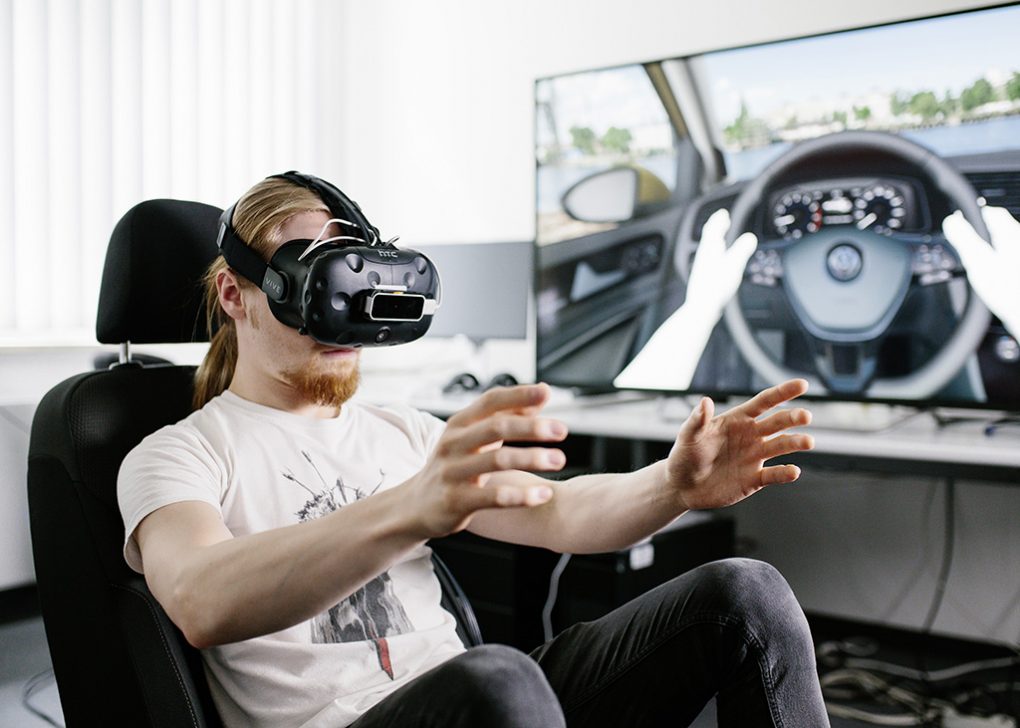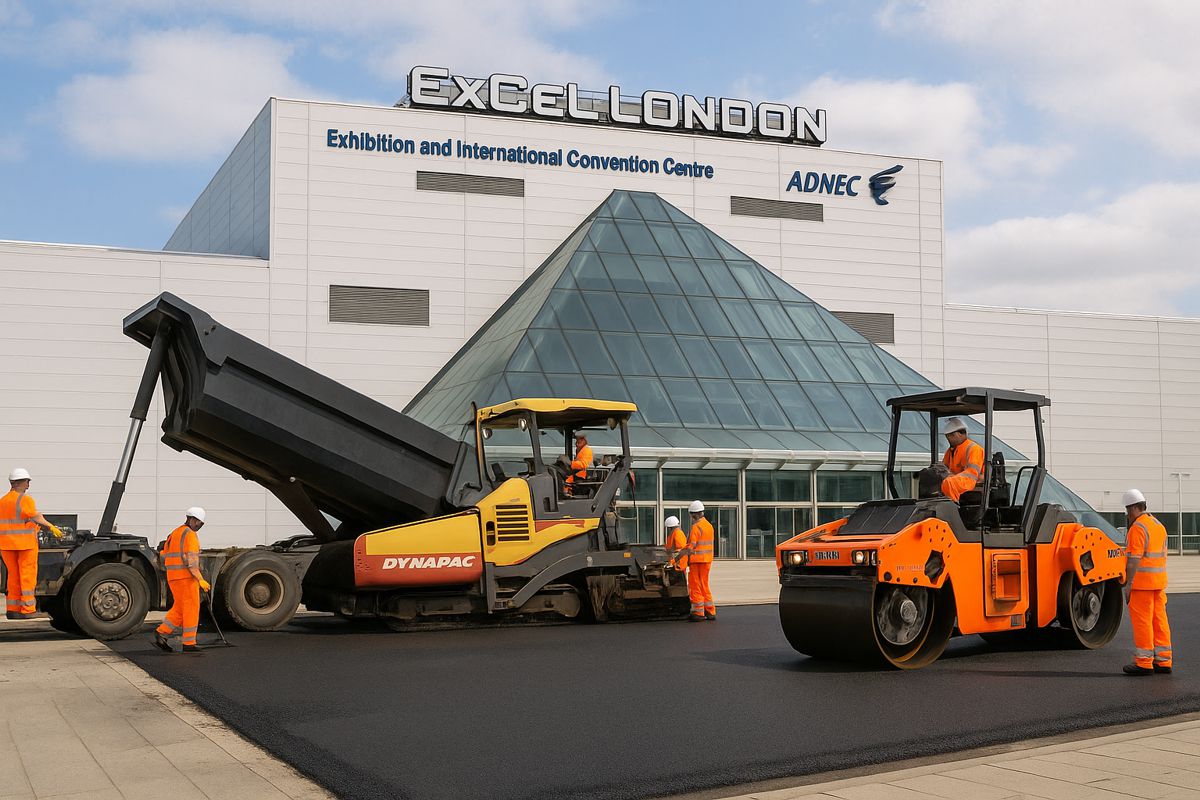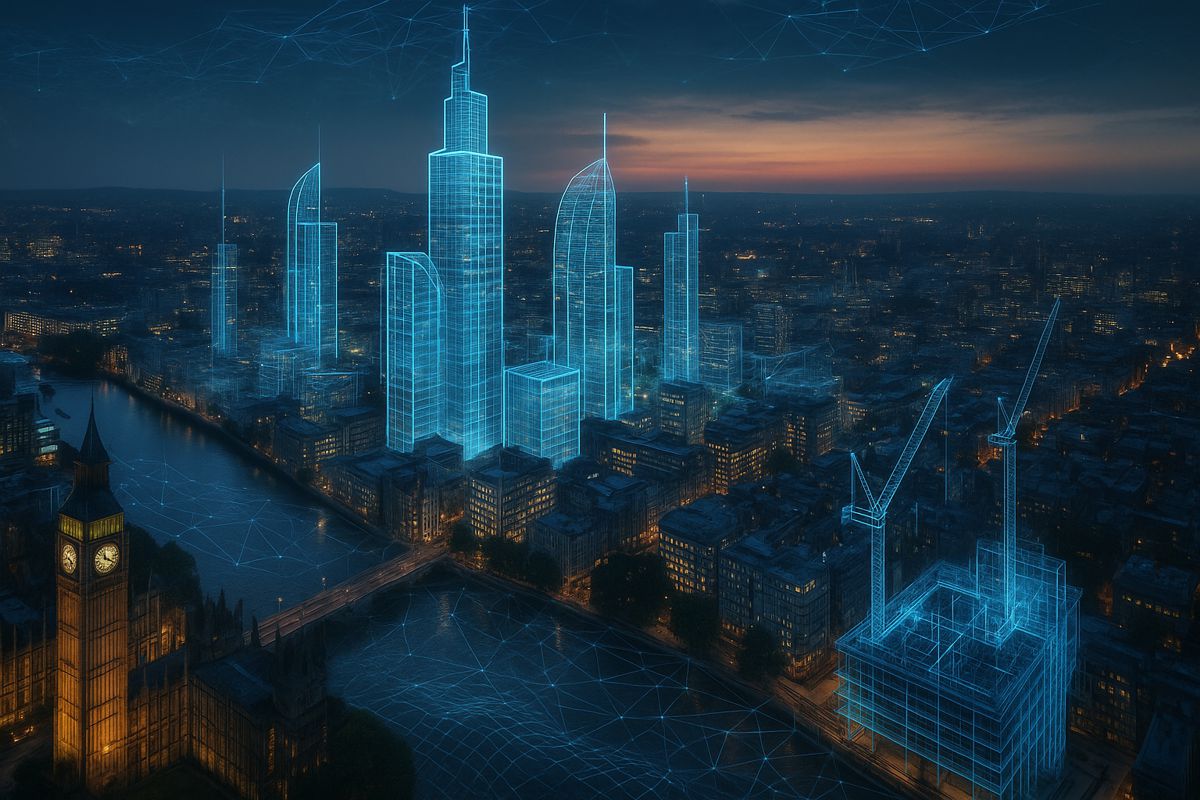Virtual Reality Developers designing a new breed of cars at Volkswagen
Virtual reality (VR) is not just game-playing. At Volkswagen, VR is contributing to faster and more efficient development of vehicle models.
VR developers such as David Kuri program the powerful software for it. The 26-year-old previously worked for an international computer game company. He is now contributing his specialist knowledge to Group IT’s Virtual Engineering Lab.
David Kuri has submerged into another world. In this world, he is currently building a new car. Not a real one – a virtual one. In fact, he is not actually building it but designing it: the body nicely aerodynamic, the headlights circular, slim handles on the doors – Kuri draws all this with vigorous hand and arm movements in the air. The new car that David Kuri is swiftly and creatively painting in the air will never be built, despite the retro charm it exudes. Kuri is not a designer. But his job at Volkswagen entails supporting designers and engineers in their work – with software.
With its help, designers can shape the appearance of new Volkswagen models to the last detail: virtually, without having to build anything at all. “Until now, design prototypes for new models were developed and built in reality,” says Kuri. “That costs time and money. Also, physical prototypes always only depict one specific stage in the decision-making processes, which is then outdated very quickly.”
David Kuri is a VR developer. Together with around thirty of his colleagues, he works at the Wolfsburg plant in the Virtual Engineering Lab of Volkswagen Group IT. Its primary task is to support Technical Development and Design in digitalizing processes, and transforming virtual reality into a practical tool.
Kuri and the team in the Virtual Engineering Lab are doing pioneering work. “Our main principle is that we write our own software!” says Kuri, 26. The challenge is to build tools that designers and developers can subsequently operate easily and apply efficiently.
David Kuri sees plenty of application areas for virtual reality at Volkswagen, for example in simulating aerodynamics. “There is a great need for virtual vehicle tests,” he says. This is where cars are brought into different virtual driving and environmental situations. “In virtual reality, the car can be taking a lot of curves through a hilly landscape in southern Italy or zooming along a motorway in northern Germany,” says the VR developer. For the programmer, it makes no difference.
Volkswagen at CEBIT 20218 (June 12 to 15)
In the Future Mobility Hall (Hall 25) at Cebit, the Volkswagen Group will be holding a forum for interested members of the public and experts with exciting presentations, first-class exhibits and interesting rounds of discussions and talks. There will be a wide range of topics , from new types of digital automobile design, research with quantum computing and trial blockchain projects to applied artificial intelligence within the company and data-backed traffic optimization in major European cities. There will also be a world premiere on the trade fair stand.
Volkswagen specialists in human resources marketing and start-up cooperation will also be available in Hall 27. They will talk about the wide variety of tasks within the company, career entry and cooperation possibilities to budding IT specialists and start-ups.





















